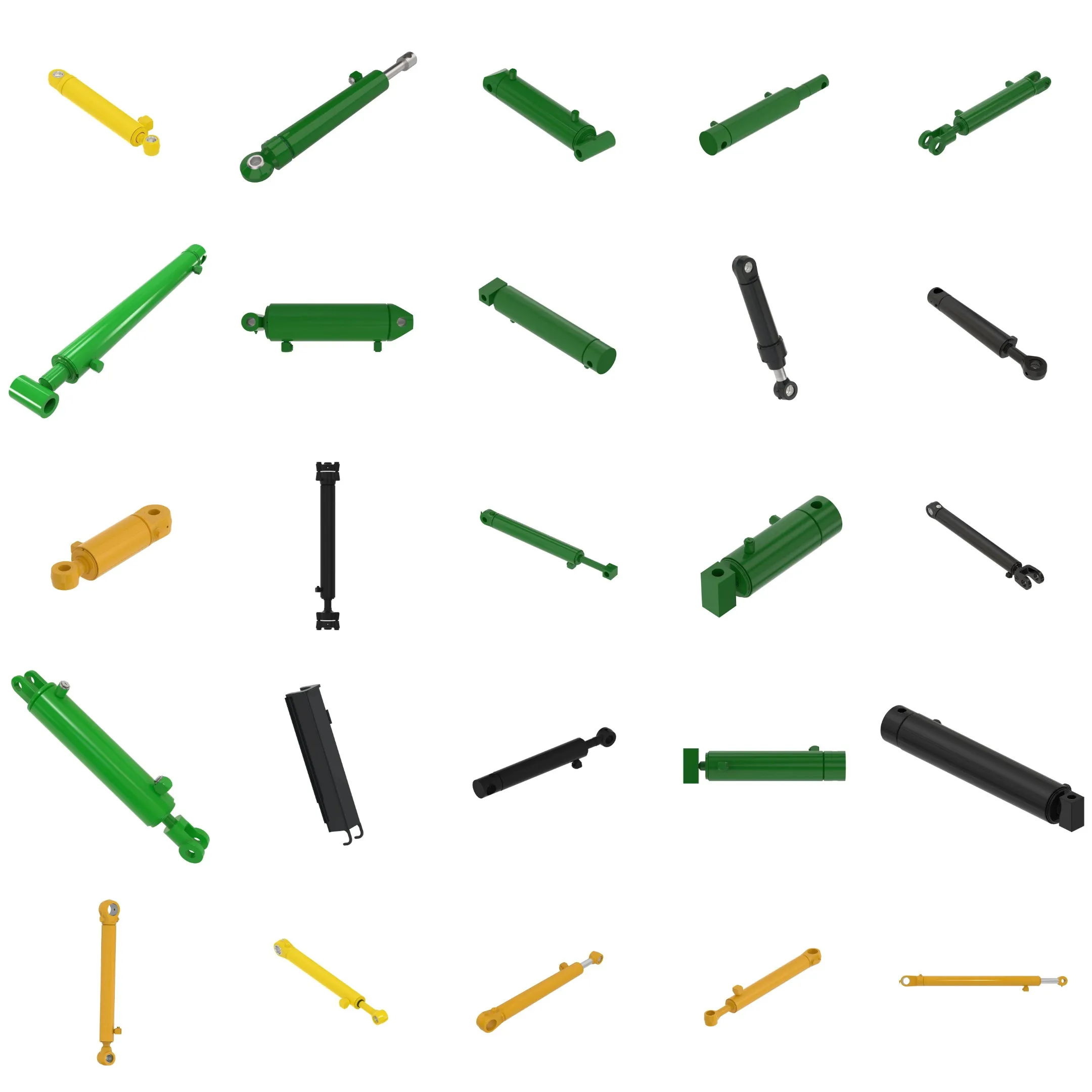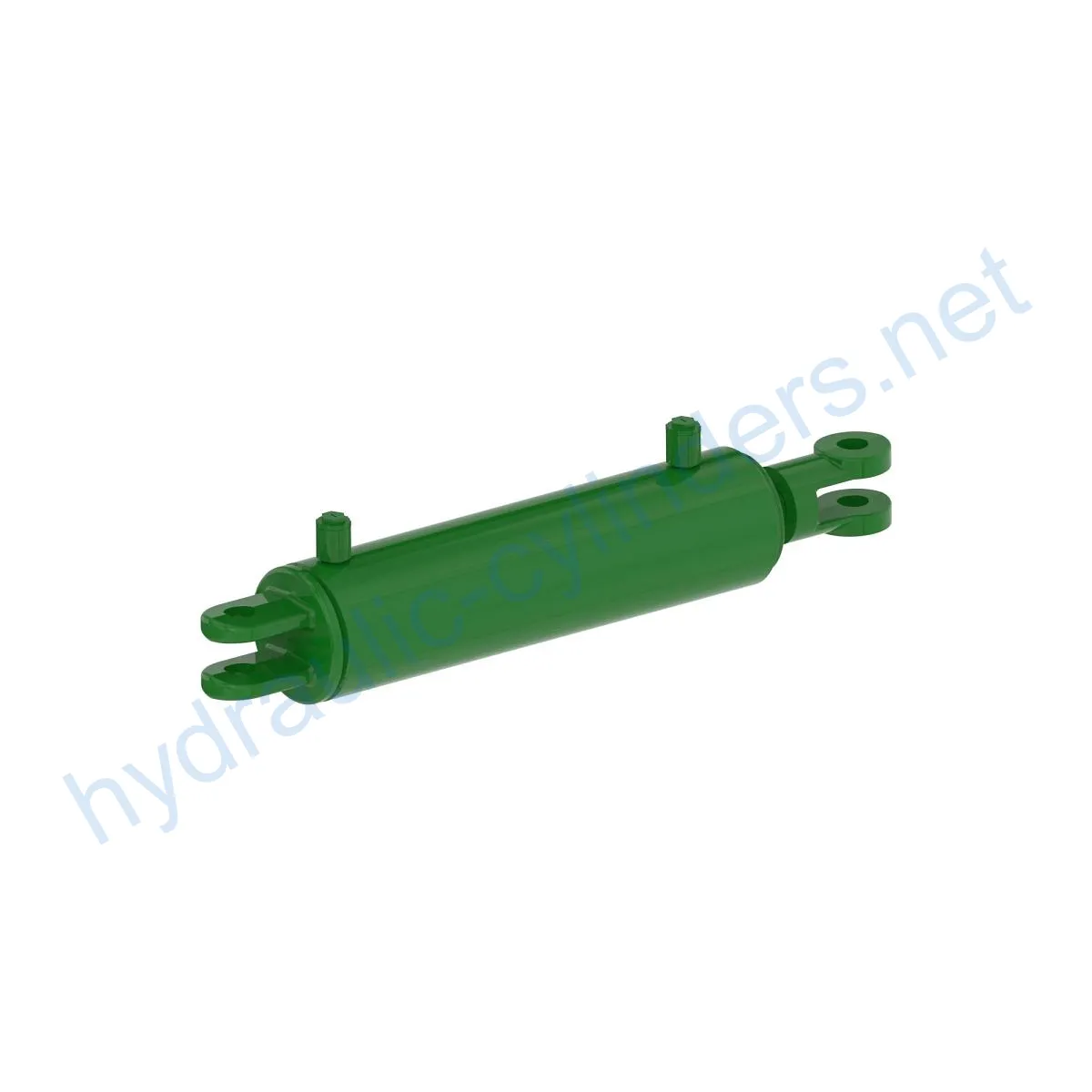Replacement Of AH212783 Hydraulic Cylinder
Hidrolik silindir üreticilerinden, tedarikçilerinden ve mekanik ürünlerin ihracatçılarından biri olarak, hidrolik silindirler ve diğer birçok ürünü sunuyoruz.
Ayrıntılar için lütfen bizimle iletişime geçin.
Posta:sales@hydraulic-cylinders.net
Hidrolik silindir üreticisi tedarikçisi ihracatçısı.
Replacement Of AH212783 Hydraulic Cylinder
Introduction
The Replacement Of AH212783 Hydraulic Cylinder is a vital component in various hydraulic systems. It plays a crucial role in enabling the smooth operation of equipment by facilitating the movement and control of hydraulic fluids. This cylinder is designed to replace the original AH212783 model, ensuring optimal performance and functionality.
Specifications and Model
Weight: 48.18 lb
Height: 4.5 in
Width: 6 in
Length: 26.9 in
Model: 1840
Features
- Enhanced Equipment Performance: Replacing damaged or worn-out hydraulic cylinders can restore the normal operating capabilities of equipment, ensuring optimal performance in various applications.
- Improved Safety: Regularly replacing hydraulic cylinders can reduce safety hazards caused by cylinder failures, ensuring the safety of both operators and equipment.
- Overload Protection: New cylinder designs often incorporate better overload protection mechanisms, enhancing overall safety.
- Quick Installation: Modern hydraulic cylinders are designed for easy installation and replacement, reducing downtime.
- Standardized Components: Many hydraulic cylinders are standardized products, making it easier to obtain replacement parts in the market.
Applications
- Excavators: Hydraulic cylinders in excavator arms or buckets may get damaged due to prolonged use or overload, requiring replacement to restore normal operations.
- Cranes: The hydraulic cylinders in crane boom arms are prone to wear and tear during frequent lifting and lowering processes, necessitating regular replacements for safety purposes.
- Tractors: Front-end loader hydraulic cylinders in tractors can develop leaks or decrease in performance due to continuous lifting and tilting operations, requiring replacement.
- Harvesters: Hydraulic systems in harvesters endure high pressures, and cylinders may fatigue and malfunction, requiring timely replacements to maintain operational efficiency.
- Automated Production Lines: Hydraulic cylinders are used to control robotic arms and other automated equipment. Cylinder failures can significantly impact production efficiency and should be replaced immediately.
- Die Casting Machines: In high-pressure and high-temperature environments, hydraulic cylinders in die casting machines may experience performance degradation, necessitating regular replacements to ensure product quality.
- Mining Equipment: Hydraulic cylinders are used in mining equipment for lifting and moving heavy loads. Due to harsh working conditions, regular inspections and replacements are necessary to prevent equipment failures.
- Bulldozers: Worn-out hydraulic cylinders on bulldozer blades can lead to decreased pushing capabilities, requiring prompt replacement to maintain operational efficiency.
Maintenance Tasks
- Regular Inspections: It is important to conduct regular inspections of the hydraulic cylinder to detect any signs of wear, leakage, or damage.
- Proper Lubrication: Adequate lubrication ensures smooth operation and prolongs the lifespan of the cylinder. Appropriate lubricants should be used as recommended by the manufacturer.
- Seal Replacement: Over time, seals may deteriorate, leading to leaks. Regularly replacing seals helps maintain the cylinder’s integrity and performance.
- Calibration Checks: Periodic calibration checks ensure the cylinder is operating within specified parameters, maximizing its efficiency and functionality.
Safety Considerations and Environmental Factors
When using hydraulic cylinders, it is crucial to follow proper safety measures to avoid accidents and injuries. Adhering to recommended operating procedures, wearing appropriate protective gear, and conducting regular inspections can help ensure safe operation. Additionally, considering environmental factors such as temperature, humidity, and exposure to corrosive substances can help prolong the lifespan of the cylinder.
Troubleshooting and Common Issues
Common issues with hydraulic cylinders include leaks, insufficient force, erratic movements, and excessive noise. These problems can be caused by various factors such as worn-out seals, damaged pistons, or inadequate lubrication. To diagnose and resolve these issues effectively, it is recommended to consult the manufacturer’s troubleshooting guide or seek professional assistance.
Preventive Measures
To minimize potential problems with hydraulic cylinders, regular maintenance and preventive measures are essential. This includes adhering to recommended inspection schedules, performing proper lubrication, promptly addressing any issues identified during inspections, and implementing preventive maintenance programs tailored to the specific application and environment.

Design Considerations and Selection Criteria
- Bearing Capacity: Hydraulic cylinders should be designed to withstand the maximum load they are expected to bear, ensuring safe and efficient operation.
- Sealing Capability: Effective sealing mechanisms, such as piston seals and rod seals made from wear-resistant materials like polyurethane and nitrile rubber, are crucial to prevent leaks and maintain optimal performance.
- Durability: Hydraulic cylinders should be constructed using high-quality materials and undergo precise surface treatments to enhance durability and minimize wear.
- Safety: Incorporating safety features in the cylinder design, such as overload protection mechanisms, ensures safe operation and prevents accidents.
- Maintainability: Designing cylinders for ease of maintenance, including accessible components and clear disassembly instructions, facilitates repair and replacement procedures.
Sealing and Lubrication
Hydraulic cylinders utilize various sealing components, including piston seals and rod seals. These seals are made from durable materials that resist wear, ensuring the cylinder’s longevity. Additionally, the cylinder body and threaded ends undergo meticulous surface treatments to enhance wear resistance. Regularly adding the appropriate amount of hydraulic oil ensures proper lubrication and reduces friction within the cylinder.
Regular Inspections and Preventive Maintenance
- Proper Installation: Providing accurate guidance on aligning the cylinder during installation and recommending the use of suitable mounting brackets to secure the cylinder.
- Recommended Inspection, Repair, and Replacement Procedures: Outlining best practices for inspecting, repairing, and replacing components to maximize the lifespan of the hydraulic cylinder.
- Part Replacement and Rebuilding Services: Offering replacement parts and rebuilding services to ensure the longevity and efficient operation of the hydraulic cylinder.
- Tips for Extending Lifespan: Providing tips and techniques to maximize the lifespan of the hydraulic cylinder, such as proper maintenance, correct usage, and optimizing operating conditions.
Product Installation Guide
1. Ensure a clean and leveled installation surface for the hydraulic cylinder.
2. Align the cylinder with the mounting points on the equipment, ensuring proper alignment for smooth operation.
3. Securely fasten the cylinder using suitable mounting brackets or clamps.
4. Connect hydraulic hoses or tubing, ensuring proper sealing and tight connections.
5. Check for any leaks or abnormalities during initial operation. If any issues are detected, refer to the troubleshooting section to diagnose and resolve them.

About Our Company
We are a leading manufacturer and wholesale distributor of replacement hydraulic cylinders. With a comprehensive product range, we have become a trusted supplier in
Take a Tour of Our VR Factory:
Take a tour of our VR factory with the following
Hydraulic Cylinder Application:


